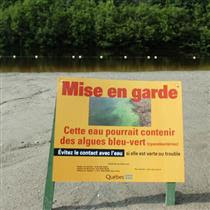IWMI: Global Water Stress
The alarming extent of water scarcity across the world is detailed in a map compiled by a leading environmental think tank.
Map details global water stress
April 7, 2007
BBC Science/Nature
It shows two key types of scarcity; water is said to be either physically scarce or economically scarce.
The map appears in a report by the International Water Management Institute (IWMI) on the use of water in agriculture.
Agricultural activities consume most water on a worldwide basis.
This is due to the enormous amounts needed to produce food.
The IWMI's Comprehensive Assessment of Water Management in Agriculture says one third of the world population face some form of water scarcity.
Economic water scarcity occurs due to a lack of investment and is characterised by poor infrastructure and unequal distribution of water.
Physical scarcity occurs when the water resources cannot meet the demands of the population. Arid regions are most associated with physical water scarcity. But the IWMI says there is an alarming trend in artificially-created scarcity - even in areas where water is apparently abundant.
This is largely due to overuse; agriculture uses up to 70 times more water to produce food than is used in drinking and other domestic purposes, including cooking, washing and bathing.
The results are desiccated and polluted rivers, declining groundwater and problems of allocation, in which some people win out in access to water over others.
Environment trade-off
Egypt imports more than half of its food because it does not have enough water to grow it domestically.
Australia is faced with major water scarcity in the Murray-Darling Basin as a result of diverting large quantities of water for use in agriculture.
 The Aral Sea has shrunk to a quarter of its original volume |
"It is possible to reduce water scarcity, feed people and address poverty, but the key trade-off is with the environment," said IWMI's David Molden, who led the assessment.
"People and their governments will face some tough decisions on how to allocate and manage water."
Frank Rijsberman, director general of the institute, told the BBC that one quarter of the world's population lived in river basins where water is physically scarce. Another one billion people live in river basins where water was economically scarce.
As a result, he said, many people around the world dependent on rivers, lakes and other wetlands risk falling into poverty.
Rising demand
The assessment says urbanisation and economic growth will drive food demand towards a higher food intake per capita and richer, more varied diets in coming decades.
Producing milk, meat, sugar, oils and vegetables requires more water than cereals and a different style of water management.
The total amount of water used up in crop production each year could rise from 7,200 cubic km to as much as 13,500 cubic km by 2050.
David Molden said that responding to growing food demand by diverting more water to agriculture and expanding the total area used for growing crops and livestock would exert a major toll on the environment.
Instead, the assessment urges farmers to grow more food without placing added pressure on the environment.
"We must grow more crop per drop, more meat and milk per drop, and more fish per drop," said Mr Molden.
The World Water Week meeting in Stockholm runs from 20-26 August.
| WHERE WATER IS SCARCE  Physical water scarcity: More than 75% of river flows are allocated to agriculture, industries or domestic purposes (accounting for recycling of return flows). This definition of scarcity - relating water availability to water demand - implies that dry areas are not necessarily water-scarce, eg Mauritania. Approaching physical water scarcity: More than 60% of river flows are allocated. These basins will experience physical water scarcity in the near future. Economic water scarcity: Water resources are abundant relative to water use, with less than 25% of water from rivers withdrawn for human purposes, but malnutrition exists. These areas could benefit by development of additional blue and green water, but human and financial capacity are limiting. Little or no water scarcity: Abundant water resources relative to use. Less than 25% of water from rivers is withdrawn for human purposes. |
Click here to read this article at the BBC.




